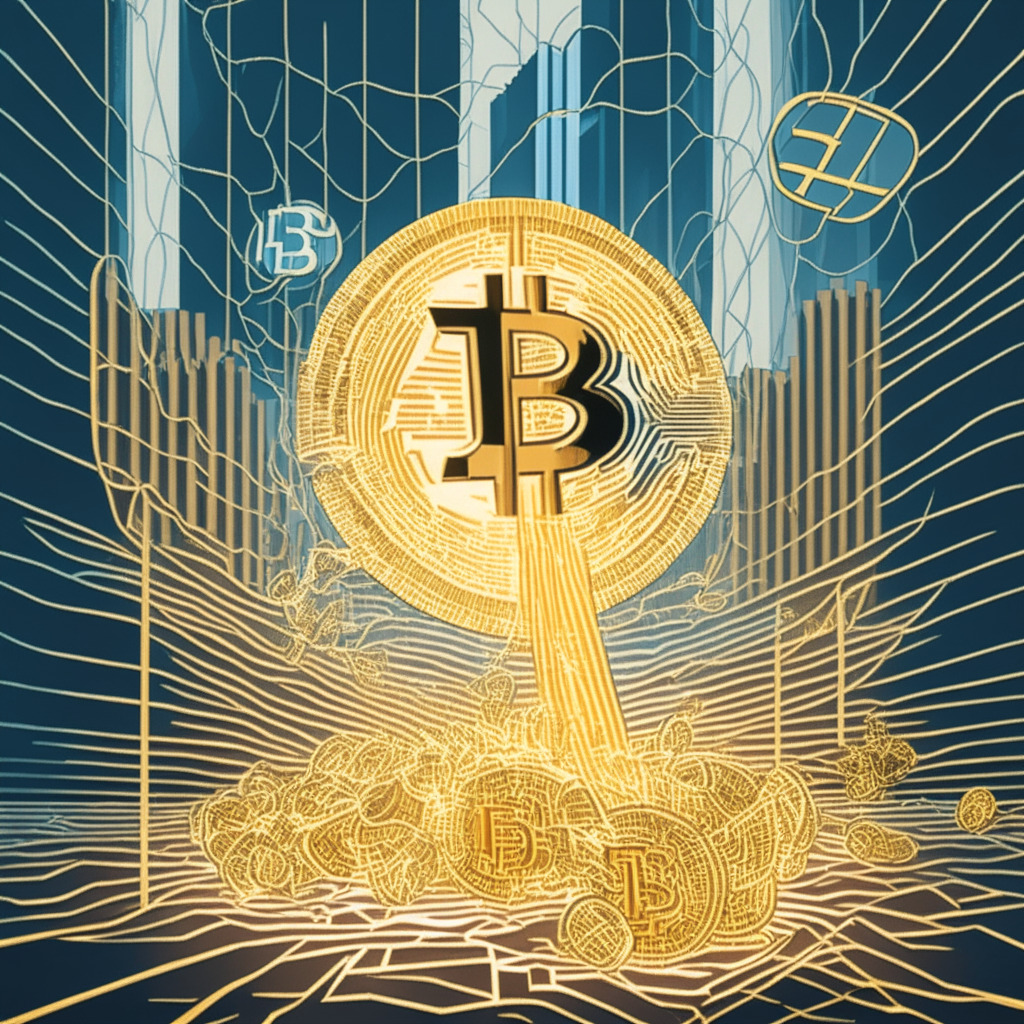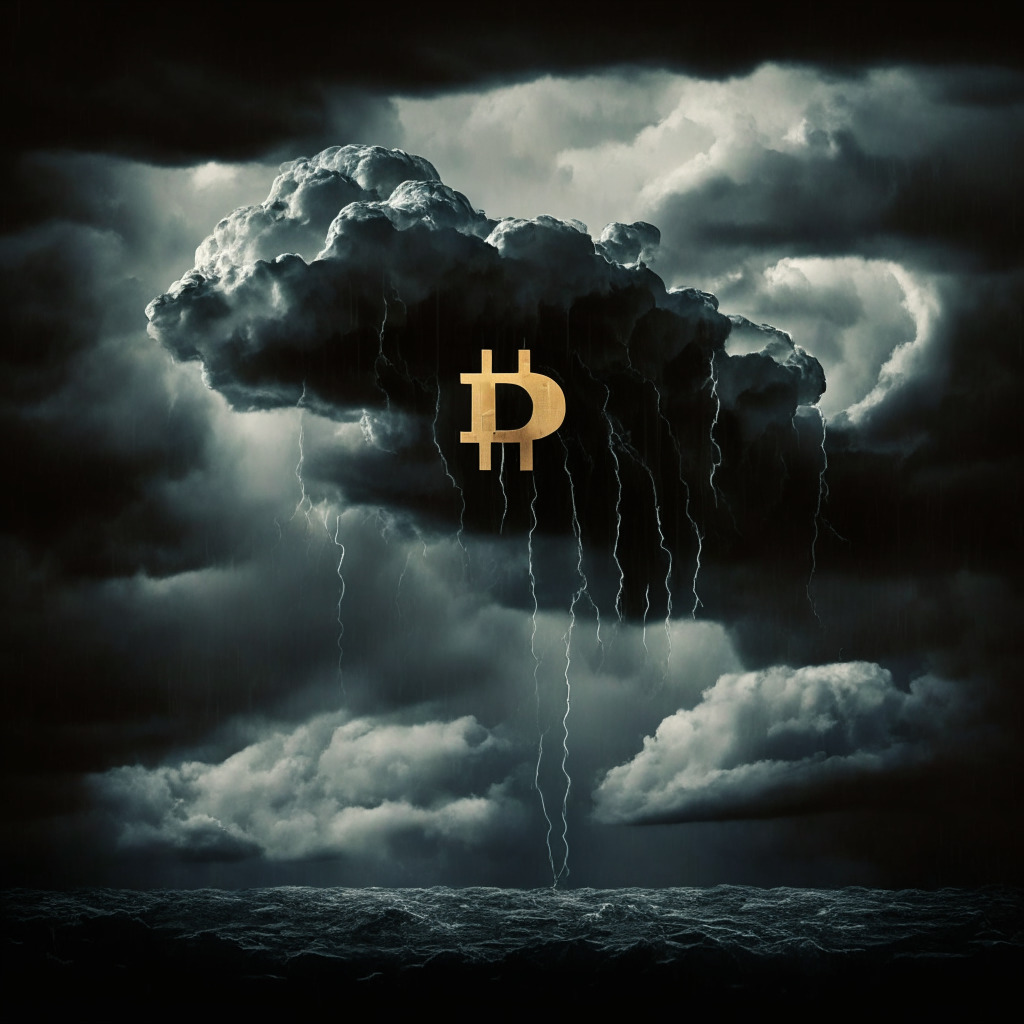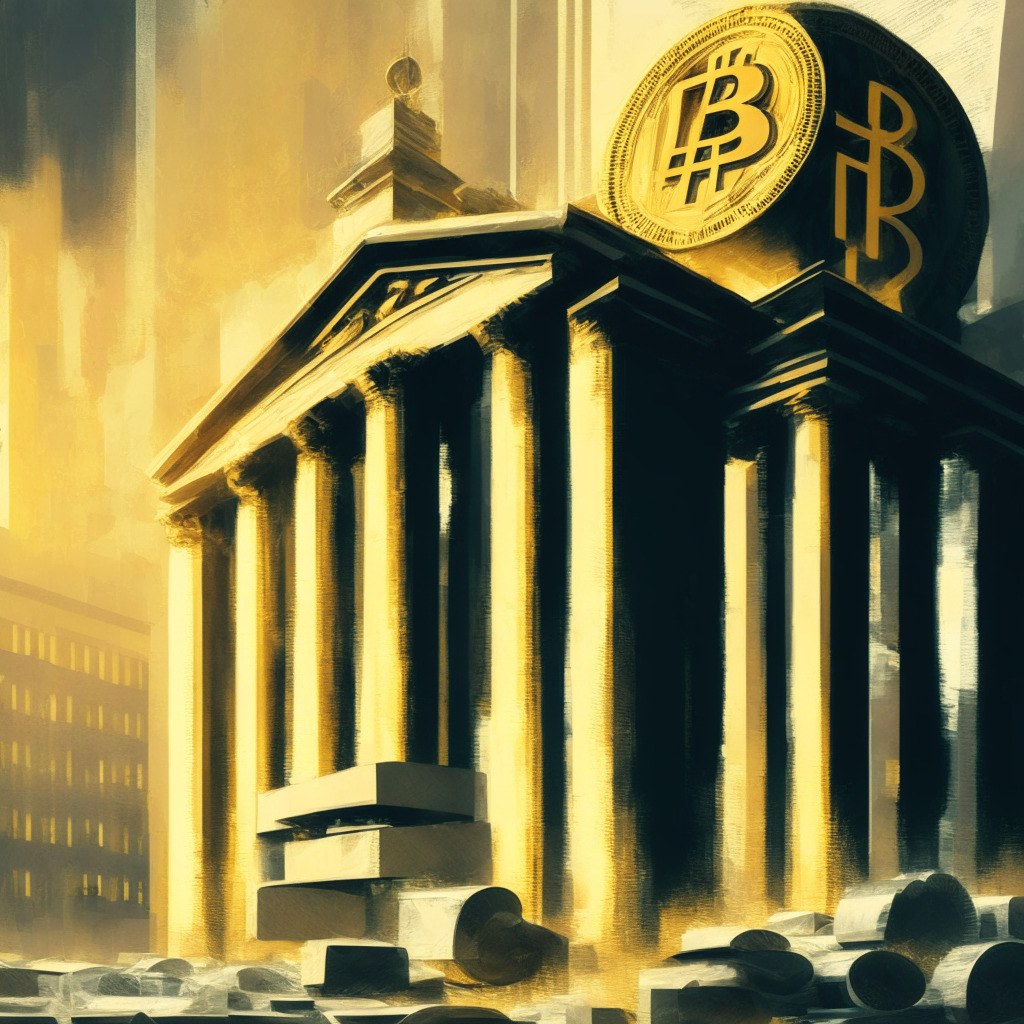The crypto market’s recent volatility is linked to the U.S. jobs data and potential interest rate hike by the Federal Reserve. Bitcoin and other cryptos reacted disruptively, with rapid price shifts influenced by macroeconomic indicators. It highlights the necessity of a nuanced understanding of wider financial systems for crypto enthusiasts, as unwarranted shocks from global markets test the resilience of digital assets.
Search Results for: U.S. Federal Reserve
Inflation, Interest Rates, and the Unpredictable Balance: Unraveling the Federal Reserve’s Challenges
The recent data from U.S. Bureau of Economic Analysis shows a decrease in the core PCE inflation index to 3.9% in August, leading to positive investor sentiment. However, potential monetary policy shifts and hints of rate hikes to control inflation cause market sensitivity. Increasing energy prices and inflation uncertainties further complicate Federal Reserve’s monetary policy considerations.
Exploring the Relationship between the Federal Reserve and Bitcoin: Shifts, Correlations, and Projections
The Federal Reserve’s decisions are impacting Bitcoin, causing a 4% value decline over the week. This dip coincides with unchanged federal interest rates. Observers note an increasingly inverse correlation between Bitcoin and the U.S dollar. However, Bitcoin enthusiasts anticipate growth from potential Bitcoin ETF approval.
Battleground CBDC: A Bipartisan Struggle Shaping Cryptocurrency’s Future in the U.S.
The House Financial Services Committee introduced three bills halting the Federal Reserve’s considerations towards a Central Bank Digital Currency (CBDC). Republicans expressed fears over the potential impact on traditional banking and the suspense it could cast on the stablecoin market. Democrats, however, pushed for continued CBDC exploration, reminding of its potential benefits in global economic competition. The Federal Reserve reaffirmed its cautious approach towards CBDC, emphasizing concerns over a stablecoin issuance without federal control.
The Tug of War: The U.S.’s Potential Leap into Digital Currency vs Fears of Surveillance
The U.S. House of Representatives is considering the introduction of a Central Bank Digital Currency (CBDC), amidst contrasting views. Democrat Rep. Stephen Lynch calls for a pilot project for a digital dollar, stressing it is “absolutely critical” for the U.S. to show leadership in digital currency development. However, concerns remain regarding transaction management, tracking, and potential regulatory limitation issues.
Wyoming Stablecoin: Game Changer for Federal Reserve or Risk to Monetary Stability?
“The Wyoming Stable Token Act introduces the concept of state-based unique stablecoins, raising questions about their potential to disrupt the Federal Reserve’s authority or revolutionize digital transactions. The future of such state-specific cryptocurrencies is entwined with the ongoing evolution of digital currencies.”
Bitcoin Volatility Correlation Flips: Predicting Potential Declines Amid FTX and Federal Reserve Concerns
Bitcoin’s price and its 30-day implied volatility have resumed a negative correlation, hinting at expected declines. Rising volatility and falling price indicate a bias for protective measures against price slides. Concerns involve potential liquidations by FTX, monetary restrictions by the Federal Reserve, and fears of global monetary tightening. This shift in volatility trend could impact the broader crypto market.
Navigating the Tightrope: Federal Oversight and the Future of Blockchain Technology
Vice Chairman of the Federal Reserve, Michael Barr, in a fintech event, emphasized the need for regulatory oversight in the swift adoption of blockchain technology. He discussed the basic research into Central Bank Digital Currency (CBDC), potential for stablecoin legislation, and the significance of balancing innovation with potential risks.
Navigating the Blockchain Future: The Impact of Federal Leadership Changes on Crypto Regulation
“The leadership at institutions like the Federal Reserve significantly influence policy changes, specifically cryptocurrency and blockchain regulation. While the US Federal Reserve reportedly has no plans for a digital dollar, the recent changes in leadership may significantly impact future policy. As cryptocurrencies and blockchain technology reshape financial systems, the balance between innovation and regulation remains a focus.”
The Paradox of Rate Hikes: Federal Reserve Tactics, BitMEX Perspective and the Emergence of the AI-Crypto Ecosystem
In a keynote at Korea Blockchain Week, Arthur Hayes, the founder of BitMEX, argued that Federal Reserve’s tactics to combat inflation could inadvertently fuel economic growth. He also predicted the potential of AI companies and a significant asset bubble resulting from the convergence of AI, crypto, and money printing.
Federal Reserve Impacts on Bullish BTC and Ethereum’s Centralization Struggles
Arthur Hayes, former CEO and co-founder of Bitmex, anticipates a response to the BTC bull market within six to twelve months. This expectation is connected to the Federal Reserve’s $25 billion program meant to stabilize the U.S. banking system. Meanwhile, Ethereum faces challenges around the centralization of nodes and scalability.
Shackles or Safeguards? Federal Reserve’s Crypto Oversight Fuels Global Expansion
The Federal Reserve’s intensified scrutiny of banks’ cryptocurrency activities has sparked criticism from Republican lawmakers who argue this deters institutions from participating in the digital asset landscape. The Fed’s new requirements may potentially suppress the progress of decentralized finance. Amidst this, U.S. regulations on digital assets remain unclear, pushing some crypto companies to explore alternative markets overseas. The discourse focuses on balancing effective supervision with fostering blockchain innovation.
Bitcoin’s Future: Influenced by Federal Reserve Policies or Independent Market Stalwart?
“The co-founder of BitMEX, Arthur Hayes, shares an optimistic view of Bitcoin’s future, driven by critique of Federal Reserve’s contentious strategies. Bitcoin is seen as an antidote to banking anomalies, growing fiat liquidity, and may face potential surges or falls.”
Bitcoin’s Chilly Wave: Market Effects, Reactions and Future Predictions Amid Federal Reserve Statements
The cryptocurrency market plunged as Bitcoin fell below $26,000, triggered by U.S. Federal Reserve Chair’s statements on countering inflation and possible rate hikes. Leading altcoin Solana also dipped 3%, and MKR saw a 4% decrease due to fears of a loan default. However, despite the gloomy outlook, experts like Sacha Ghebali believe the market could see an upturn if a spot bitcoin ETF is approved, offering a possible crypto market recovery.
Regulatory Shift: The Stifling or Stability of Cryptocurrency in U.S. Banking
“The U.S. FDIC’s latest risk report indicates a shift from previously indifferent stance towards considering cryptocurrency as an area of concern. The 2023 Risk Review shows FDIC’s readiness to initiate discussions with banks about crypto-asset activities, echoing similar sentiments across U.S. banking agencies. Yet, it also reveals the complex balancing act required in integrating digital assets safely into the conventional banking system.”
Crypto Market and Economic Impacts: How the CPI, Federal Reserve Moves and Inflation Rate Shape the Future
The crypto community anticipates the economic impacts of the upcoming Consumer Price Index release, which will likely influence Bitcoin and other cryptocurrencies’ value. Additionally, the Federal Reserve plans to supervise banks’ crypto-related activities through dedicated digital asset experts, aiming to ensure safe and sound operations. Meanwhile, Binance has acquired operation licenses in El Salvador to bolster its global legitimacy.
Federal Reserve’s Crypto Oversight: Balancing Innovation and Regulation
The U.S. Federal Reserve is extending oversight of banks involved in the crypto and blockchain sector with the Novel Activities Supervision Program. It aims to balance innovation with risk management, covering crypto-related services including custody, lending, and trading. This move raises questions about the intersection of banking, regulations, and the emerging crypto domain which could shape blockchain’s future.
U.S Federal Reserve Steers into Crypto: Balancing Innovation with Regulation
The U.S. Federal Reserve is stepping into the crypto industry, establishing a supervision program for banks’ crypto involvement. Although current rules remain unaltered, the approach for oversight has been defined. This move indicates the Fed’s interest in harnessing digital assets’ potential but with keenness to mitigate risks involved. Such actions could potentially lead to tighter crypto regulations.
Decoding the Complex Dance of Job Growth, Federal Reserve Policies and Bitcoin’s Trajectory
“The U.S. economy added 187,000 jobs in July, slightly lower than predictions. The job growth had a minor influence on Bitcoin’s price, showing some responsiveness of crypto market to macroeconomic indicators. Yet, the crypto market continues to evolve uniquely, potentially serving as a global alternate currency.”
Figure Technologies Stumbles in Quest for Federal Bank Charter: A Tale of Regulatory Hurdles and Crypto Industry Prognosis
“Figure Technologies, after a challenging three-year process marked by regulatory scrutiny, has withdrawn its application to become a federally chartered bank in the U.S. The hindrance emerges amidst an uncertain banking landscape for digital asset companies and post the downfall of some related regional lenders.”
Federal Interest Rate Hike and the Surprising Ignition of Cryptocurrency Markets
Cryptocurrency prices, including Bitcoin and Ethereum, have welcomed the anticipated interest rate increase by the U.S. Federal Reserve. Bitcoin experienced a 0.8% surge while Ethereum saw a 0.5% rise. According to Lex Sokolin of Generative Ventures, crypto’s overall story remains unaffected despite macroeconomic events. Equity markets show mixed responses, but further rate hikes might occur.
Bitcoin Surfs Above $29,000 Amid U.S. Monetary Shift: Musk’s DOGE, Market Outlooks, and Inflation Fears
Despite the U.S. Federal Reserve’s impending hawkish shift, BTC maintains support above $29,000, while most other cryptos face a gloomy market. DOGE uniquely rose 8%, potentially due to rumors of wider crypto usage in Elon Musk’s new Twitter platform, X.
Federal Reserve, Inflation and Crypto: A Delicate Dance Amid Economic Flux
“The FOMC meeting is expected to continue the trend of increasing interest rates due to persistent inflation concerns. Meanwhile, despite macroeconomic shifts, Bitcoin and crypto markets remain stable. The Fed’s attempts to align a thriving job market with price reduction strategies pose considerable challenges.”
Federal Reserve’s CBDC Hunt: A Financial Death Star or Leap Towards Progress?
“The San Francisco Federal Reserve Bank’s job posting for a “senior crypto architect” has sparked criticism. There are concerns CBDCs could be misused as tools for coercion and control. Representatives like Warren Davidson contend CBDCs should prioritize being a stable store of value and an efficient means of exchange, rather than being used for surveillance and control.”
Decoding FedNow: U.S Federal Reserve’s Stand on CBDCs and Future of Instant Payment Services
The U.S. Federal Reserve’s new instant payment service, FedNow, set to launch in July 2023, is not associated with central bank digital currencies (CBDCs), but operates within the fiat ecosystem. Despite testing by numerous institutions and growing CBDC interest globally, the Federal Reserve reiterates, it requires legislative authorization before issuing a CBDC.
Bitcoin’s Battle Against Interest Rate Hikes: A Test of Endurance in U.S.’ Growing Economy
“Bitcoin struggles amid the release of U.S. economic data affirming continued growth, and prospect of another interest rate hike by the Federal Reserve. Despite lacklustre retail sales, a deeper look into consumer spending shows optimism. Questions arise regarding Bitcoin’s ability to withstand another Fed rate hike.”
Bollinger Bands Indicate a Pivotal Moment for Bitcoin Amidst U.S. Inflation Data Release
The ‘Bollinger Band squeeze’ pattern exhibited by Bitcoin is stirring interest amongst crypto traders, as it often forebodes major market shifts. This pattern coincides with the upcoming release of June’s U.S. inflation data, which could significantly impact Bitcoin’s market dynamics.
Bitcoin Plunges to $30,600: Unexpected U.S. Employment Data Shakes Financial Markets
The value of Bitcoin plunged to $30,600 following surprising US employment data indicating 497,000 private-sector jobs added in June. This resulted in significant financial market fluctuations, with speculation of further Federal Reserve rate hikes affecting crypto and stock markets negatively.
Economic Data Storm: Impact on the Crypto Scene and the Looming Federal Reserve Decision
“The U.S. Federal Reserve’s scheduled meeting this week could strongly affect the crypto scene. Rate hikes and employment data from this meeting will be under heavy scrutiny from crypto enthusiasts. As shifts in interest rates and economic trends raise anticipation, the impact on digital coins remains uncertain.”
Federal Reserve Decision, Crypto Turbulence, and Top 7 Cryptos to Watch Now
Amid economic uncertainty and cryptocurrency market turbulence, investors may explore cryptos with strong fundamentals and favorable technical analysis, such as WSM, BNB, ECOTERRA, INJ, YPRED, FTM, and LPX. Careful analysis of fundamentals and technical indicators can help navigate the current market environment successfully.
Custodia’s Battle with Federal Reserve: A Turning Point for Crypto Banks?
Crypto bank Custodia’s lawsuit against the Federal Reserve for allegedly delaying its master account application gains momentum following a Wyoming Judge’s refusal to dismiss the case. The outcome could significantly impact the future of crypto banks and traditional financial institutions, highlighting the importance of balancing innovation and regulatory oversight.
Stablecoin Bill: Federal vs State Regulation and Impact on Digital Asset Ecosystem
The third draft of the new stablecoin bill, “The Future of Digital Assets: Providing Clarity for the Digital Asset Ecosystem,” proposes the Federal Reserve as the key regulator for stablecoins. The bipartisan bill aims to offer comprehensive guidance on supervising and enforcing stablecoin markets, covering aspects like issuer requirements and payment stablecoins.































